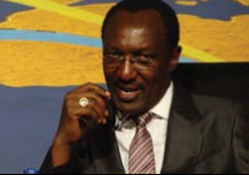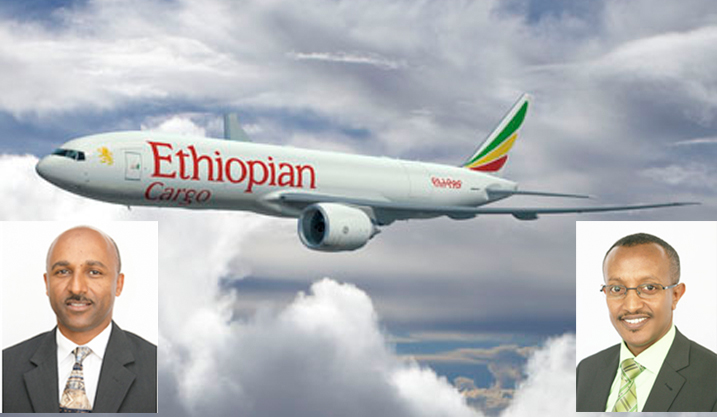
It was just about a year
ago that Air Cargo Africa (Feb 20-22, 2011) was held in Nairobi, Kenya.
We have been thinking about that event
and the impact a big show at home must have had on the hearts and
minds of the airline builders at Kenya Airways, Nairobi’s hometown
airline.
Right now in early 2012, Kenya Airways
Cargo is off to a flying start as it continues to expand its services,
having taken on its first freighter last September.
That freighter—a B737—is
the first of its kind in the KQ fleet, and today it is spreading its
wings over the Central African region, covering Kenya, Uganda, Tanzania,
Rwanda, the Democratic Republic of Congo, Burundi, and southern Sudan.
Even more ambitious, Kenya Airways Cargo
launched all-cargo lift via B747-400 freighter services last month
(January 2012) in association with Martinair (KLM owns 26 percent
of KQ, Government of Kenya owns 23 percent, and private investors
own 51 percent).
 Now, just one year after the big show
left town, Kenya Airways Cargo B747F services reach out and fly weekly
from Nairobi to Amsterdam, Sharjah, Guangzhou, and then back to Sharjah,
Nairobi and on to Lagos.
Now, just one year after the big show
left town, Kenya Airways Cargo B747F services reach out and fly weekly
from Nairobi to Amsterdam, Sharjah, Guangzhou, and then back to Sharjah,
Nairobi and on to Lagos.
With Kenya air cargo tonnage projected to rise by 7.96 percent in
2012 (driven in part by some difficulties due to congestion at the
Port of Mombasa and the ever present challenges of shipping via rail
in Kenya), the carrier could reportedly secure two B737 freighters
later this year to operate from its Nairobi hub to interior points
throughout the country and region as well.
“We are expanding partnerships
in Europe,” Sauda Rajab, Kenya Airways Cargo General Manager,
told FlyingTypers.
“The idea is to connect the three
continents—Asia, Africa and Europe,” she declared.
“We believe we are suitably situated
to increase trade between China and Africa, and felt this would work
both for us and our partners.
“Africa’s trade doubled
from 2000 to 2009, and trade with emerging markets, rather than traditional
economic partners, has grown most rapidly.
“The share of trade with emerging
economies has grown from 23 percent to 39 percent in the past 10 years
and China’s share of Africa’s trade has tripled,”
Sauda Rajab said.
 Sauda
Rajab also noted that Kenya Airways Cargo has completed installation
of an electronic cargo monitoring system and is only the second carrier
in Africa to be e-freight compliant. Sauda
Rajab also noted that Kenya Airways Cargo has completed installation
of an electronic cargo monitoring system and is only the second carrier
in Africa to be e-freight compliant.
“The new system is expected to
reduce costs, improve transit times, accuracy, and the competitiveness
of airfreight.
“To increase e-freight penetration
in Kenya, a Cargo Community System will be required for local freight
forwarders who currently do not have a system with IATA messaging
capabilities.
“We are currently in discussions
with the Kenya Revenue Authority to establish a CCS here that will
automate the manual cargo booking that is currently in use.
“This is a cog in the wheel of
automating cargo freighting, which is currently laden with tedious
paper processing.
“A single transaction requires
at least 30 forms of paper to be filled in and processed at any one
time, making the booking, transport, and clearing unnecessarily long,”
she said.
Kenya Airways currently operates 34
airplanes to 48 countries.
The carrier would like to accelerate
growth to 60 aircraft during the next half decade and has ordered
nine B787s, three B777s, and 10 Embraer aircraft.
But the carrier, like many other operators
around the world, had high hopes for inducting new generation B787s
into its fleet in 2010; however, with Boeings inability to deliver
the aircraft, the carrier has had to scramble to meet its growth demands,
with first deliveries of the aircraft now expected in late 2013 or
early 2014.
To grow itself and acquire new aircraft,
Kenya Airways is preparing for a public stock issue this year  despite
projections of softer earnings due to the Eurozone money crises, ultra
high fuel costs, and some concern over national elections that will
be held in Kenya to bring on a new government. despite
projections of softer earnings due to the Eurozone money crises, ultra
high fuel costs, and some concern over national elections that will
be held in Kenya to bring on a new government.
Although the road ahead will be challenging
as it moves forward in 2012, Kenya Airways has delivered profits for
the past two years. With a growing cargo division and over three million
passengers in 2011, the carrier is among Africa's fastest growing
airlines.
“Kenya Airways' business prospects
remain strong.
“Positive investor sentiment reflects
confidence in the company's prospects going forward.
“Our business fundamentals, including
the 10-year growth strategy that is currently in motion, underpin
the airline's strong prospects," said Titus Naikuni, Kenya Airways
Chief Executive Officer.
Geoffrey/Flossie
|






